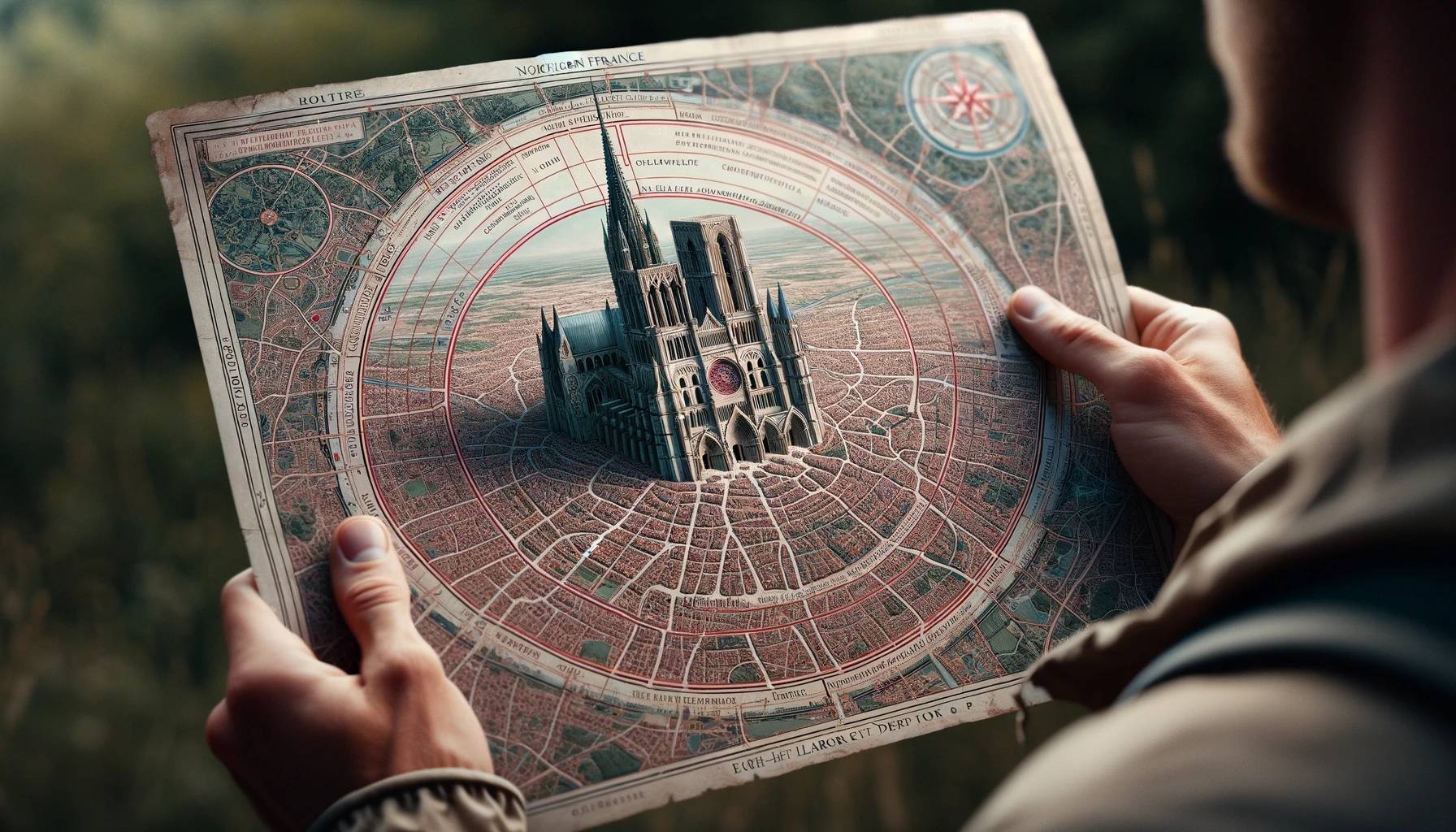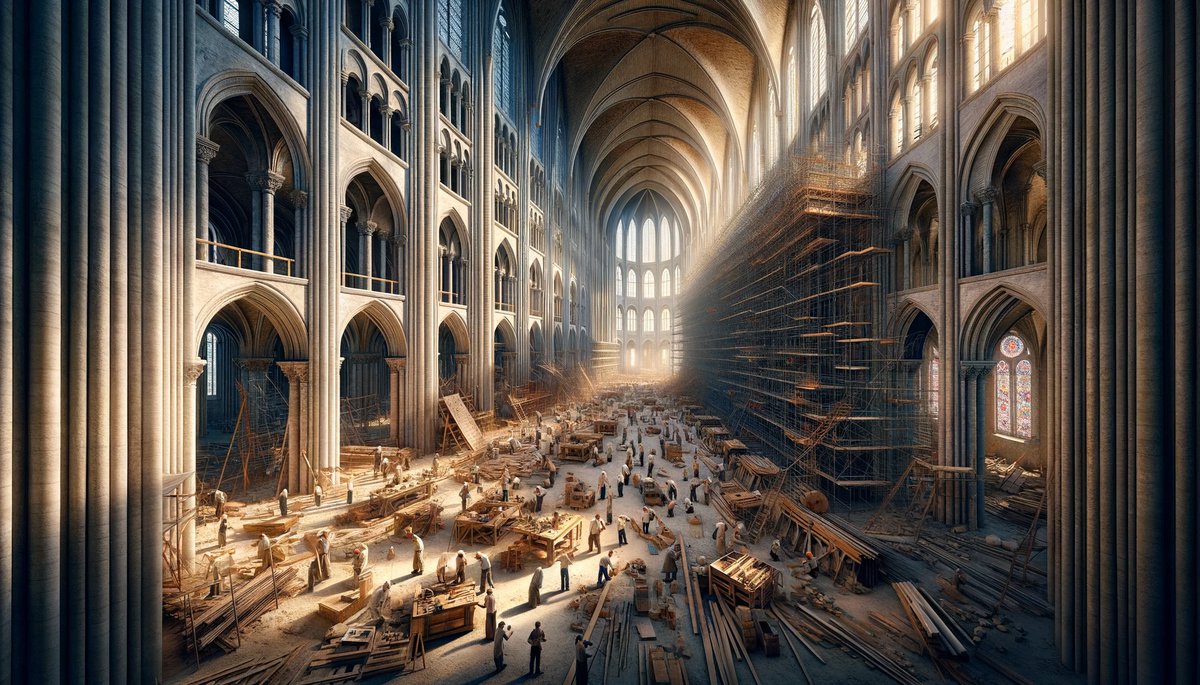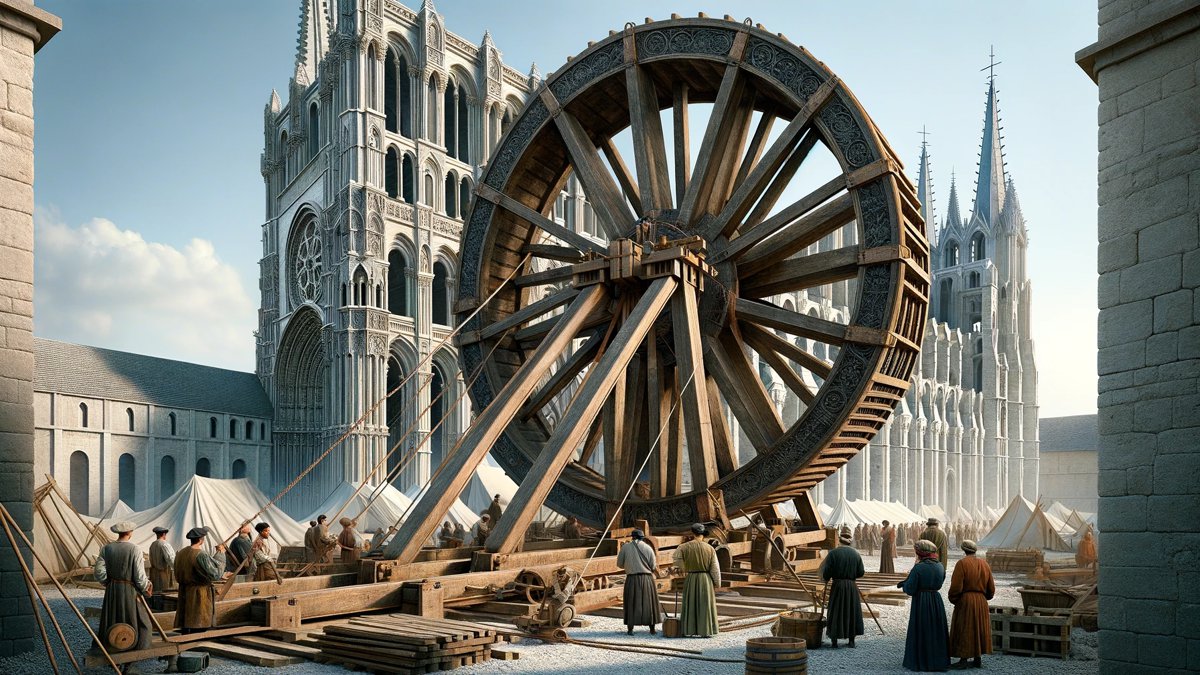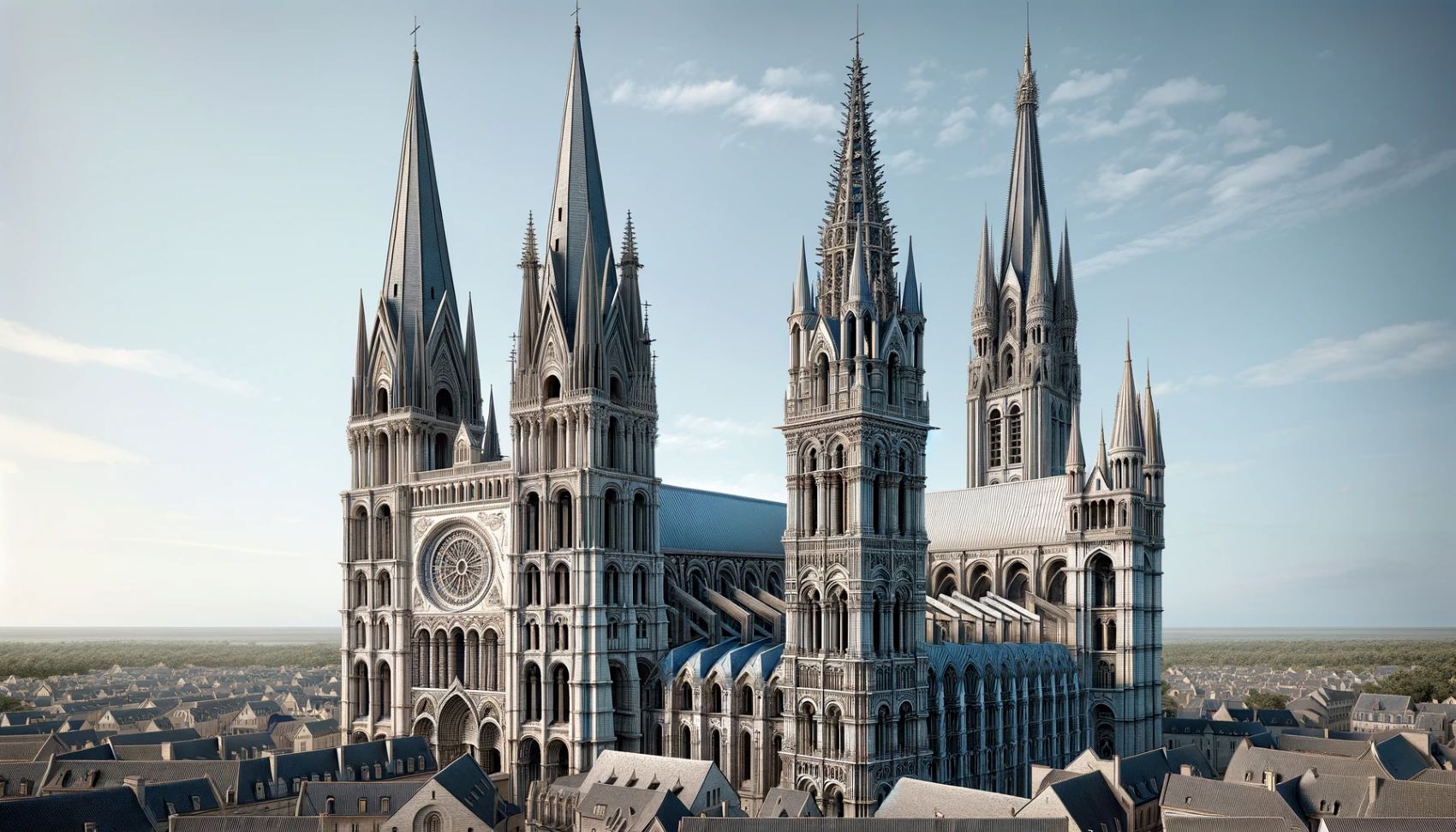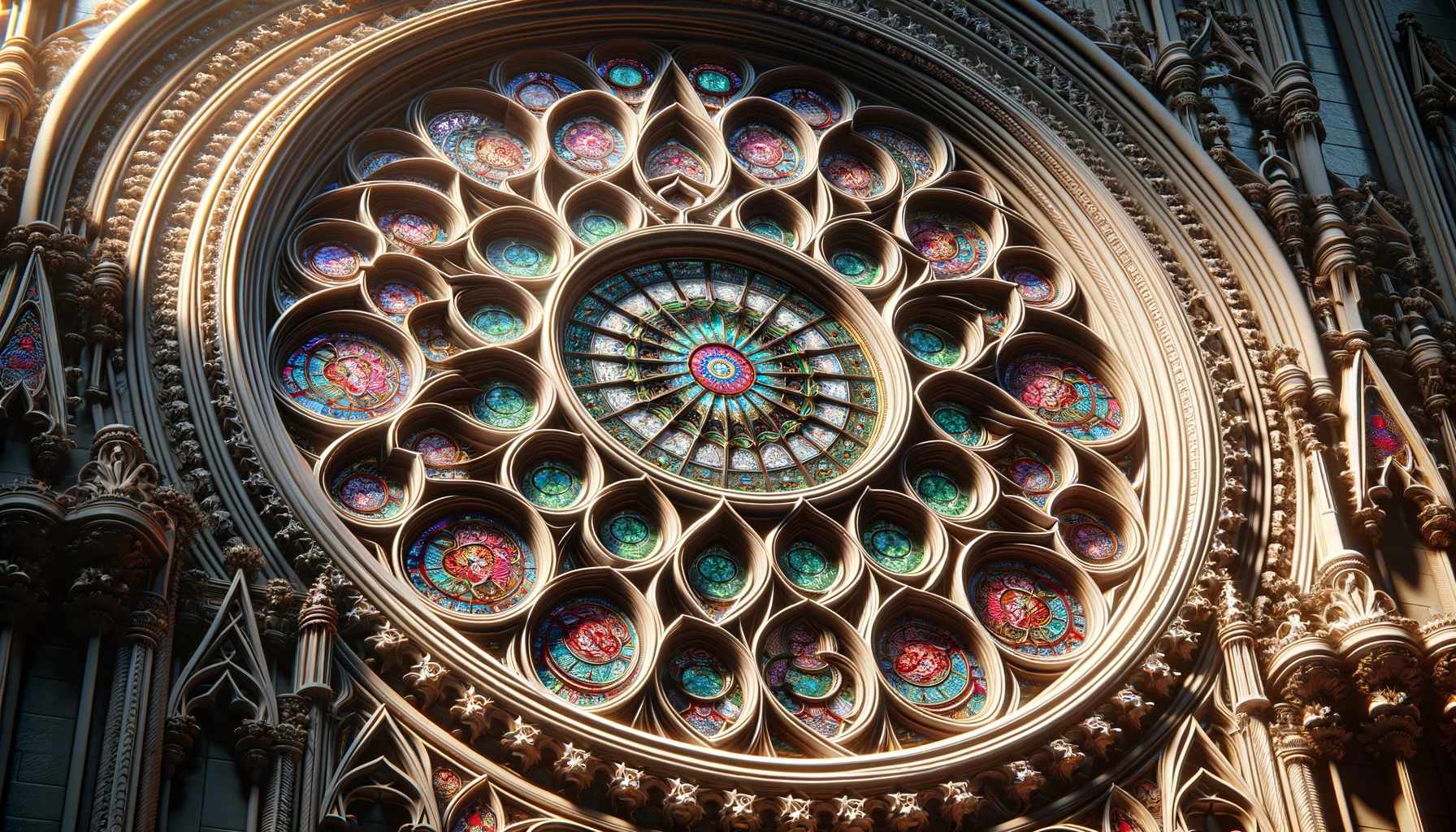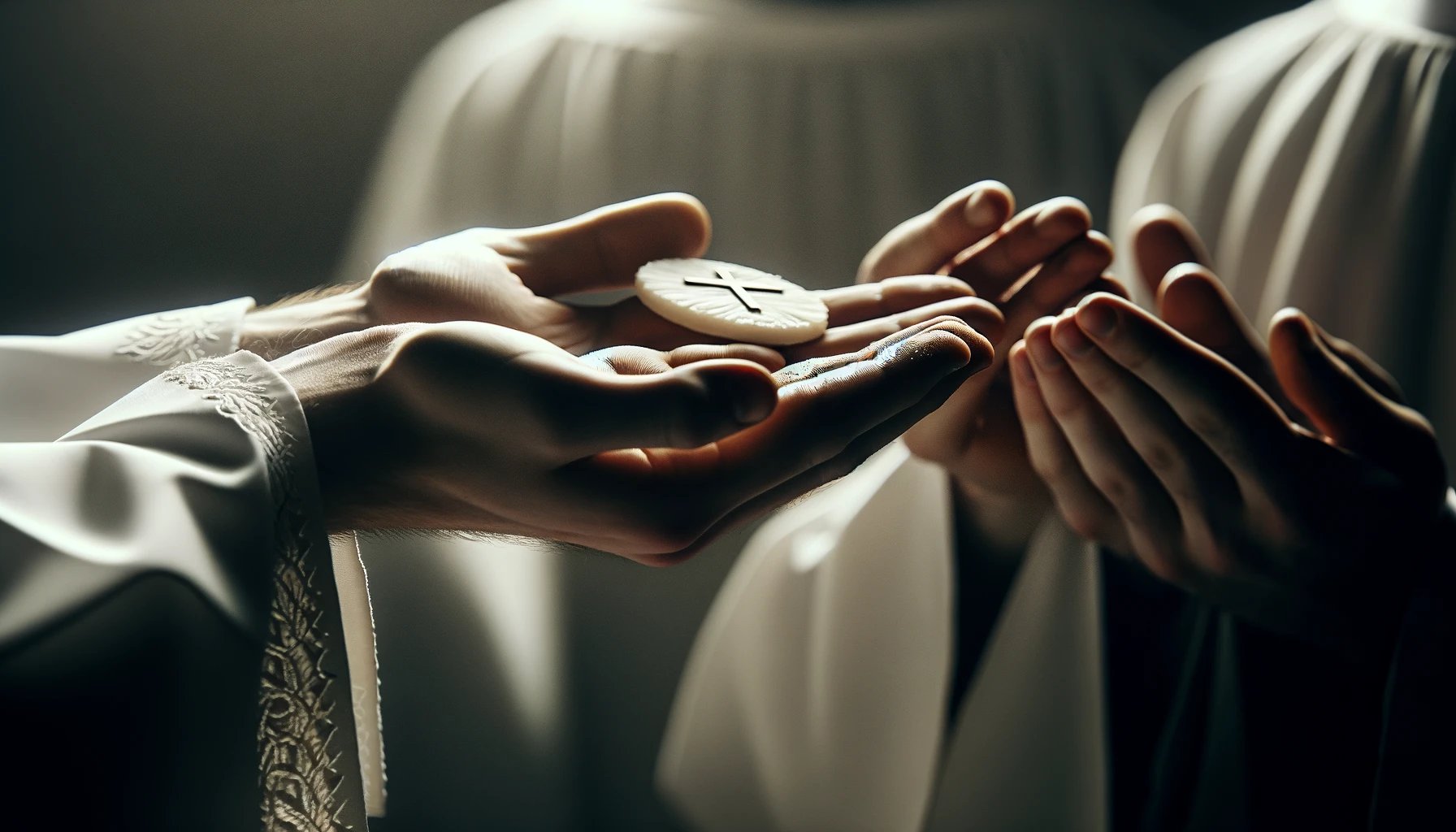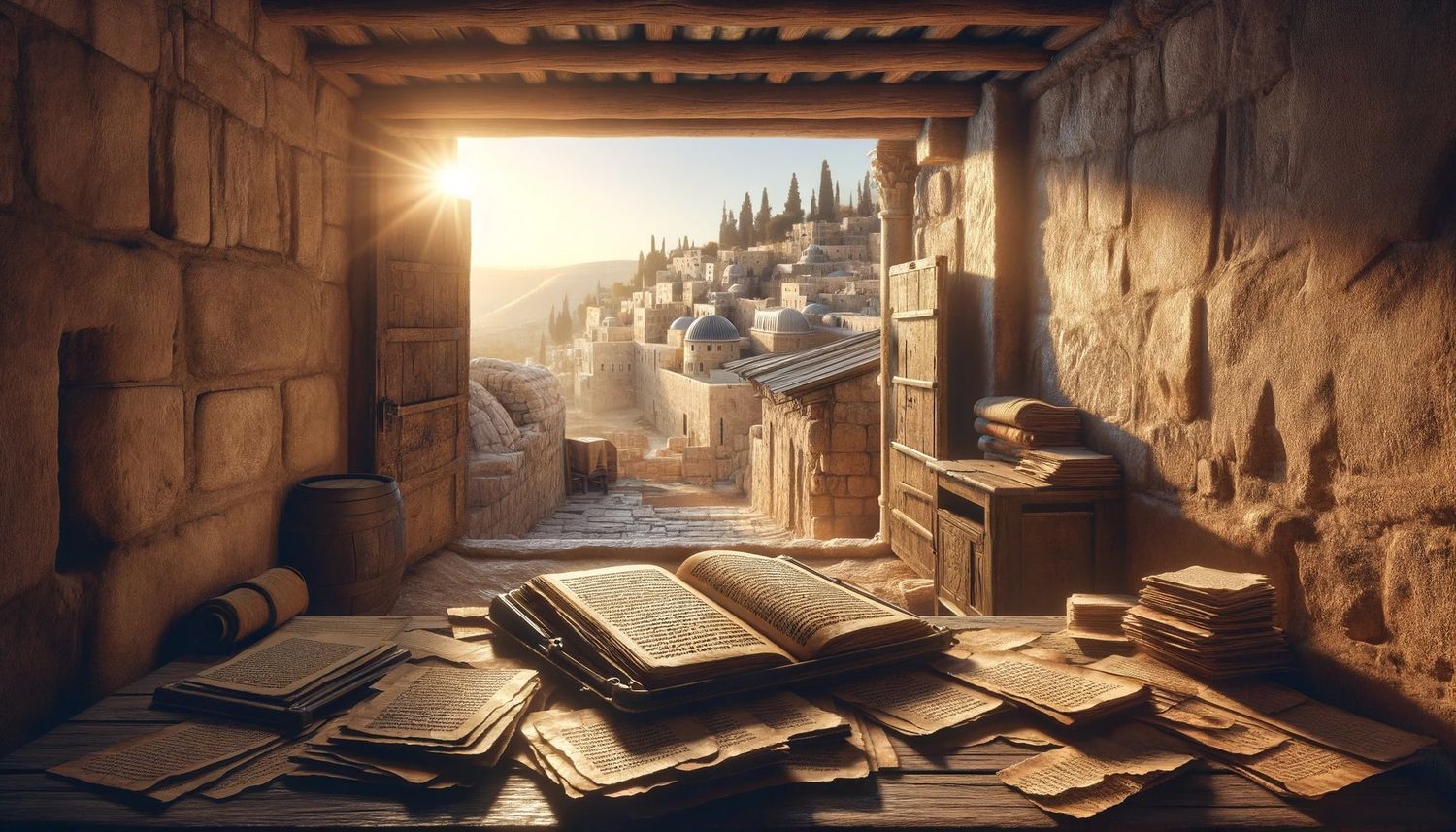Home>Arts and Culture>What Was The Purpose Of The Stained-Glass Windows Installed In Chartres Cathedral?
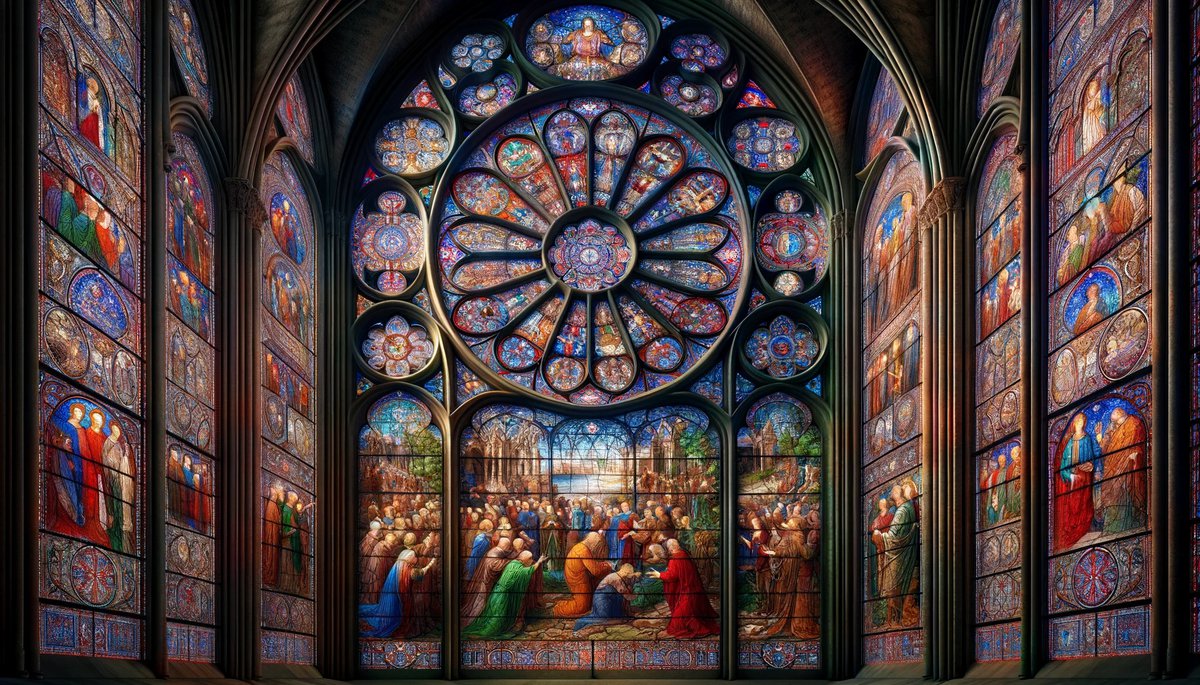

Arts and Culture
What Was The Purpose Of The Stained-Glass Windows Installed In Chartres Cathedral?
Published: February 16, 2024
Peter Smith, Editorial Director at Christian.net, combines deep insights into faith, politics, and culture to lead content creation that resonates widely. Awarded for his contributions to religious discourse, he previously headed a major organization for religious communicators, enhancing dialogue on faith's societal impacts.
Discover the purpose and significance of the stunning stained-glass windows at Chartres Cathedral, a masterpiece of arts and culture. Explore the intricate designs and rich history behind these iconic creations.
(Many of the links in this article redirect to a specific reviewed product. Your purchase of these products through affiliate links helps to generate commission for Christian.net, at no extra cost. Learn more)
Table of Contents
Introduction
Chartres Cathedral, a masterpiece of Gothic architecture, stands as a testament to the ingenuity and artistry of medieval craftsmen. One of the most striking features of this magnificent structure is its exquisite stained-glass windows, which have captivated visitors for centuries. These windows, with their vibrant colors and intricate designs, serve as a visual symphony that illuminates the cathedral's interior with a kaleidoscope of light.
The purpose of the stained-glass windows in Chartres Cathedral extends far beyond mere decoration. Each pane of glass tells a story, conveying religious narratives and moral teachings to the illiterate masses of the Middle Ages. As such, these windows served as a form of visual theology, bringing the sacred stories and teachings of the Christian faith to life in a way that transcended language barriers.
Moreover, the stained-glass windows of Chartres Cathedral were not only a means of conveying religious narratives but also a reflection of the era's devotion to craftsmanship and artistic expression. The intricate details and vibrant hues of the windows stand as a testament to the skill and dedication of the artisans who crafted them, showcasing the intersection of faith, art, and technical mastery.
As we delve into the history and significance of Chartres Cathedral's stained-glass windows, we will uncover the profound impact these masterpieces had on the spiritual experiences of worshipers and the enduring legacy they have left on the world of art and architecture. Join us on a journey through time and artistry as we explore the purpose, symbolism, and influence of the stained-glass windows that grace the hallowed halls of Chartres Cathedral.
History of Chartres Cathedral
Chartres Cathedral, also known as the Cathedral of Our Lady of Chartres, is a majestic architectural marvel nestled in the picturesque town of Chartres, France. Its origins can be traced back to the 4th century when the site was initially home to a Gallo-Roman temple dedicated to the Celtic goddess, Epona. However, it was not until the 12th century that the construction of the current cathedral commenced.
The cathedral's construction was a monumental undertaking, spanning over several decades and involving the contributions of skilled artisans, craftsmen, and architects. The project was driven by a fervent desire to create a grand monument that would honor the Virgin Mary and serve as a beacon of faith for pilgrims and worshipers.
Chartres Cathedral stands as a prime example of Gothic architecture, characterized by its soaring spires, ribbed vaults, and flying buttresses. The cathedral's construction was a testament to the innovative engineering and architectural techniques of the medieval period, showcasing the mastery of builders in creating structures that defied gravity and inspired awe.
Throughout its history, Chartres Cathedral has weathered various challenges, including fires and the ravages of war. Despite these trials, the cathedral has endured, thanks to the unwavering dedication of those who sought to preserve its sacred legacy.
The cathedral's significance extends beyond its architectural splendor. It has been a site of pilgrimage and spiritual devotion for centuries, drawing countless visitors seeking solace, inspiration, and a connection to the divine. Its enduring presence has made it a symbol of faith and a testament to the enduring power of human creativity and devotion.
Chartres Cathedral stands as a living testament to the artistic, spiritual, and cultural achievements of the medieval era. Its rich history and architectural grandeur continue to captivate and inspire visitors from around the world, inviting them to marvel at the timeless beauty and profound significance of this sacred edifice.
The Role of Stained-Glass Windows in Medieval Churches
Stained-glass windows played a pivotal role in the spiritual and cultural landscape of medieval churches, serving as both a visual and theological medium for conveying religious narratives and moral teachings to the largely illiterate populace of the time. These magnificent windows, with their vibrant colors and intricate designs, served as a form of "Bible for the poor," offering a visually compelling means of imparting the stories and teachings of the Christian faith to the masses.
During the medieval period, when the majority of the population was unable to read or write, the church utilized visual art, including stained-glass windows, as a powerful tool for communicating religious narratives and doctrines. The windows depicted scenes from the Bible, the lives of saints, and other religious allegories, effectively serving as pictorial representations of the Christian faith. This visual storytelling transcended linguistic barriers, allowing individuals of diverse backgrounds and languages to connect with the sacred narratives and teachings of Christianity.
Moreover, the radiant hues and ethereal glow of the stained-glass windows were believed to evoke a sense of divine presence and transcendence, creating an awe-inspiring atmosphere within the sacred space of the church. The interplay of light and color through the windows was symbolic of the divine light of God shining upon the worshipers, immersing them in a spiritual experience that transcended the material world.
In addition to their spiritual significance, stained-glass windows also served as a reflection of the era's devotion to craftsmanship and artistic expression. Skilled artisans and craftsmen dedicated themselves to the meticulous creation of these windows, employing techniques such as lead glazing and the use of precious metals to achieve stunning visual effects. The intricate details and vibrant hues of the windows stood as a testament to the skill and dedication of the artisans who crafted them, showcasing the intersection of faith, art, and technical mastery.
The role of stained-glass windows in medieval churches extended beyond mere decoration; they were a profound means of conveying religious narratives, fostering spiritual contemplation, and inspiring a sense of wonder and reverence. These windows continue to stand as enduring testaments to the artistic, spiritual, and cultural achievements of the medieval era, leaving an indelible mark on the world of art and architecture.
The Purpose of Stained-Glass Windows in Chartres Cathedral
The stained-glass windows in Chartres Cathedral were not merely decorative elements; they were profound conduits of religious narratives and spiritual teachings, meticulously crafted to impart the sacred stories and doctrines of the Christian faith to the medieval worshipers. These magnificent windows served as a visual testament to the power of art and storytelling, transcending the limitations of language and literacy to communicate profound theological truths.
In an era where the majority of the population was illiterate, the stained-glass windows of Chartres Cathedral served as a form of "Bible for the poor," offering a visually captivating means of conveying the fundamental tenets of Christianity. Each pane of glass depicted scenes from the Bible, the lives of saints, and allegorical representations of theological concepts, effectively transforming the cathedral into a living, luminous narrative of the Christian faith. The vibrant colors and intricate designs of the windows brought these narratives to life, inviting worshipers to engage with the sacred stories in a visually immersive and compelling manner.
Furthermore, the purpose of the stained-glass windows extended beyond mere storytelling; they were designed to evoke a sense of awe and wonder, creating an ethereal atmosphere within the cathedral. The interplay of light and color through the windows was symbolic of the divine light of God shining upon the worshipers, enveloping them in a transcendent experience that transcended the material realm. This immersive visual spectacle was intended to inspire contemplation, reverence, and a profound sense of connection to the divine, enriching the spiritual experiences of those who gathered within the cathedral's hallowed halls.
Moreover, the stained-glass windows of Chartres Cathedral were a testament to the era's reverence for craftsmanship and artistic expression. Skilled artisans dedicated themselves to the meticulous creation of these windows, employing techniques that showcased their mastery of the medium. The intricate details, vibrant hues, and masterful use of light and shadow in the windows reflected the artisans' commitment to excellence, serving as a testament to the intersection of faith, art, and technical skill.
In essence, the purpose of the stained-glass windows in Chartres Cathedral was multifaceted: they were visual narratives of the Christian faith, sources of spiritual inspiration, and masterpieces of artistic expression. Their enduring legacy continues to captivate and inspire visitors, inviting them to behold the timeless beauty and profound significance of these sacred works of art.
The Iconography and Symbolism of the Stained-Glass Windows
The stained-glass windows of Chartres Cathedral are a rich tapestry of iconography and symbolism, each pane meticulously crafted to convey profound theological truths and spiritual allegories. These windows serve as visual narratives, employing a language of symbols and imagery to communicate the core tenets of the Christian faith and the enduring struggle between good and evil.
One of the most striking aspects of the iconography within the stained-glass windows is the portrayal of biblical narratives and the lives of saints. Each window is adorned with vibrant depictions of key events from the Old and New Testaments, offering a visual chronicle of salvation history. From the creation of the world to the life, death, and resurrection of Jesus Christ, these windows unfold the sacred drama of the Christian narrative, inviting worshipers to engage with the foundational stories of their faith in a visually immersive manner.
Moreover, the symbolism embedded within the stained-glass windows extends beyond literal representations of biblical events. The use of colors, patterns, and recurring motifs imbues the windows with layers of symbolic meaning. For instance, the use of vibrant blues and radiant golds symbolizes the divine nature of Christ and the heavenly realm, while the presence of intricate floral designs and geometric patterns conveys the harmony and order inherent in God's creation.
The iconography within the stained-glass windows also serves as a testament to the enduring struggle between light and darkness, good and evil. Through the juxtaposition of luminous depictions of angels, saints, and martyrs against the backdrop of swirling, tumultuous scenes of chaos and temptation, the windows convey the eternal battle between righteousness and sin, offering a visual reminder of the moral and spiritual challenges faced by humanity.
Furthermore, the symbolism within the stained-glass windows extends to the portrayal of virtues, vices, and theological concepts. The personification of virtues such as faith, hope, and charity, alongside the representation of vices such as pride, greed, and envy, serves as a visual exhortation to the worshipers, urging them to embrace righteousness and eschew sin.
In essence, the iconography and symbolism of the stained-glass windows in Chartres Cathedral are a testament to the profound theological and artistic vision of their creators. Through a masterful interplay of visual storytelling and symbolic imagery, these windows continue to inspire contemplation, reverence, and a deep appreciation for the enduring power of art to convey spiritual truths across generations.
The Impact of Stained-Glass Windows on Worshipers
The stained-glass windows of Chartres Cathedral exerted a profound impact on worshipers, transcending the boundaries of language and literacy to evoke a deeply spiritual and contemplative experience. As worshipers entered the sacred space of the cathedral, they were enveloped in a symphony of radiant colors and ethereal light, creating an atmosphere of transcendence and awe. The interplay of light and color through the stained-glass windows was symbolic of the divine light of God shining upon the worshipers, immersing them in a spiritual experience that transcended the material world.
The visual spectacle presented by the stained-glass windows served as a catalyst for contemplation and introspection, inviting worshipers to engage with the sacred narratives and theological allegories depicted within the windows. The vibrant depictions of biblical events, the lives of saints, and allegorical representations of theological concepts provided a visual framework through which worshipers could connect with the foundational stories of their faith. For the largely illiterate populace of the medieval era, the windows served as a form of "Bible for the poor," offering a visually compelling means of imparting the teachings of the Christian faith.
Moreover, the impact of the stained-glass windows extended beyond the conveyance of religious narratives; they fostered a sense of reverence and wonder, inspiring worshipers to contemplate the divine mysteries and the eternal truths of their faith. The radiant hues and intricate designs of the windows created an otherworldly ambiance, transporting worshipers into a realm of spiritual contemplation and transcendence. The visual symphony of the stained-glass windows, coupled with the sacred chants and rituals of the liturgy, elevated the worship experience, inviting individuals to immerse themselves in the divine presence.
Furthermore, the impact of the stained-glass windows on worshipers was not confined to the realm of spirituality; it also stirred a deep appreciation for the intersection of faith, art, and craftsmanship. The meticulous creation of the windows, with their intricate details and vibrant hues, served as a testament to the skill and dedication of the artisans who crafted them. Worshipers were not only inspired by the spiritual significance of the windows but also by the artistic mastery and technical skill that went into their creation.
In essence, the impact of the stained-glass windows on worshipers was multifaceted, encompassing spiritual inspiration, contemplation, and a profound sense of connection to the divine. The enduring legacy of these windows continues to captivate and inspire visitors, inviting them to behold the timeless beauty and profound significance of these sacred works of art.
Conclusion
In conclusion, the stained-glass windows of Chartres Cathedral stand as timeless testaments to the profound intersection of faith, art, and human creativity. These magnificent windows, with their vibrant hues, intricate designs, and rich symbolism, served as visual narratives of the Christian faith, transcending the limitations of language and literacy to convey profound theological truths to worshipers of the medieval era. As a form of "Bible for the poor," the windows offered a visually captivating means of imparting the sacred stories and teachings of Christianity, inviting individuals to engage with the foundational narratives of their faith in a visually immersive and compelling manner.
Moreover, the impact of the stained-glass windows extended beyond the conveyance of religious narratives; they fostered a sense of reverence, wonder, and spiritual contemplation, enveloping worshipers in an atmosphere of transcendence and awe. The interplay of light and color through the windows symbolized the divine light of God shining upon the worshipers, immersing them in a spiritual experience that transcended the material world. The visual spectacle presented by the windows served as a catalyst for introspection, inviting worshipers to contemplate the divine mysteries and the eternal truths of their faith.
Furthermore, the enduring legacy of the stained-glass windows continues to captivate and inspire visitors, inviting them to behold the timeless beauty and profound significance of these sacred works of art. The intricate details, vibrant hues, and masterful use of light and shadow in the windows reflect the artisans' commitment to excellence, serving as a testament to the enduring power of art to convey spiritual truths across generations.
Chartres Cathedral, with its exquisite stained-glass windows, stands as a living testament to the artistic, spiritual, and cultural achievements of the medieval era. Its rich history and architectural grandeur continue to captivate and inspire visitors from around the world, inviting them to marvel at the timeless beauty and profound significance of this sacred edifice. The enduring impact of the stained-glass windows on worshipers serves as a reminder of the profound connection between art, spirituality, and the human experience, leaving an indelible mark on the world of art and architecture.
